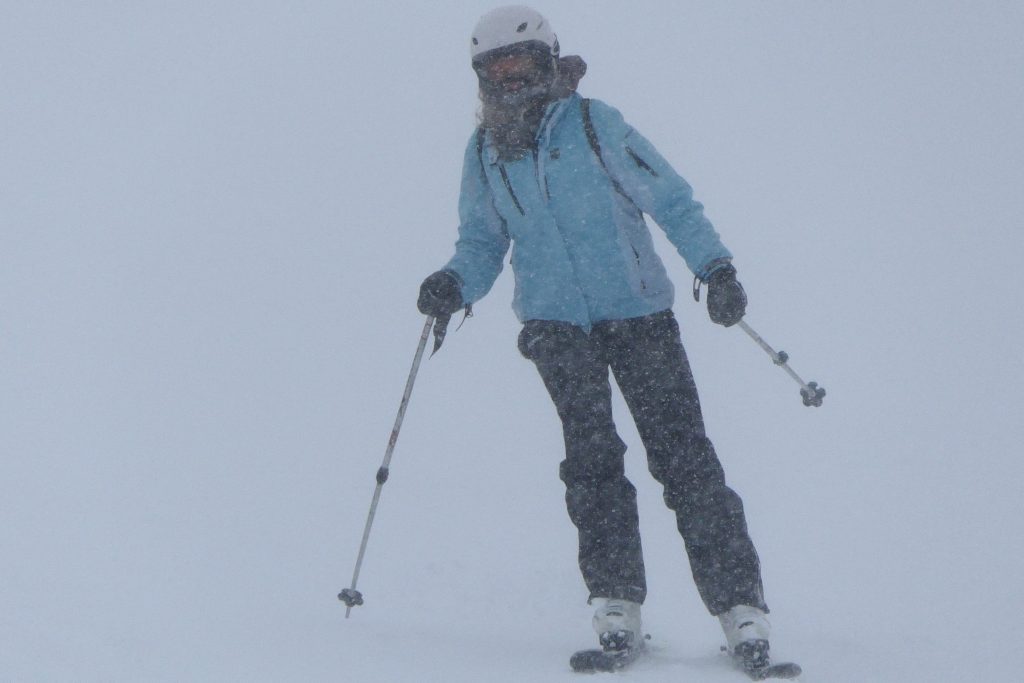Lucinda
Doing very well considering there is a physical problem affecting the left hip. In the skiing it shows up as being unable to stand correctly on the right leg – so analysis of the movement makes one think that the left leg is fine and the problem is on the right. Hopefully this will resolve after some rest and recovery.

Sam
Good progress today after bringing rotation under control and then pressurising the outside leg strongly.

Technical Input
Angulation/Rotation
Hip angulation was introduced to prevent Sam from rotating his upper body and to try to strengthen Lucinda’s stance. When dynamics are engaged we work the outside leg in the turn with a rolling of the foot (subtalar), pulling in with the adductors and movement the centre of mass all inwards in the turn – simultaneously we rotate the pelvis by pulling the outside hip joint backwards and hence inwards – so the body sits strongly on top of a single hip joint.
This conscious action prevents the hip being pulled forwards by the ski and leg during the turn – especially if the skier is attempting to face the upper body downhill. The protective reflexive activation of the lower abdominals that is associated with this action was demonstrated statically. This movement of the hip/pelvis is a direct counter rotation – so not only does it create “angulation” but it prevents hip rotation and protects the lower back from injury.
Dynamics (Turn Exit)
Dynamics has two parts – getting in and then getting out of a turn. To complete a turn when travelling forwards (as opposed to a pivot which is mainly sideslipping) allow the ski to finish the turn beneath the body letting the ski lift you up and hence “out” of the turn – so the skis go flat across the hill and you are falling downhill over the downhill ski. This removes any blockages to the movement of the centre of mass during the turn transitions.
Early Pressure
When the body is entering the new turn make sure there is a strong push with the uphill leg and clear commitment to standing on it for the duration of the turn.

